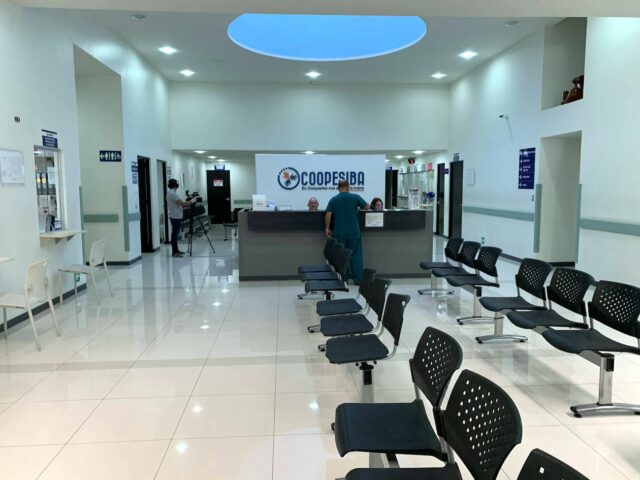The famous American magazine The New Yorker published on its website an extensive report – which appeared in the print edition on August 30, 2021 – entitled ‘Costa Ricans Live More Than Us. What is the secret?’
And you do not have to read a lot to figure out what “that secret” that the publication wants to unravel is: our health system. The New Yorker points out that in the United States health and medical care are separate and, usually, under the control of private companies.
In the Costa Rican case, both systems are integrated under the figure of the Costa Rican Social Security Fund (CCSS). The Ministry of Health is the governing body. “In the United States and elsewhere, public health and healthcare are largely independent businesses. Costa Rica shows the benefits of integrating the two: it spends less than we do on health care and obtains better results”, indicates The New Yorker in the article signed by Atul Gawande.
Life expectancy at birth… and the Covid-19

The report emphasizes the fact that Costa Rica has one sixth of the per capita income of the United States. However, in addition to the fact that health care costs represent a “fraction of ours,” lines later, the author assures that -despite the previous context- Costa Rica has a life expectancy higher than that of the United States.
While in the northern nation women live 80.2 years on average, male life expectancy went from 76.3 in 2019 to 74.5 in 2020. In Costa Rica this indicator for women is 82.73 years. Meanwhile, for men it is 77.54 years.
And immediately the article reaches a conclusion: the country has made public health a way to improve the health of the population in a comprehensive way. “Even in countries with strong universal health care, public health is often a complement; the vast majority of spending goes to treating people’s ailments.
“In Costa Rica, however, public health has been a priority for decades. The Covid-19 pandemic has revealed the impoverished state of public health, even in rich countries, and the cost of our negligence. Costa Rica, on the other hand, is shown as an alternative”, indicates the report.
The case of Álvaro Salas, former president of the CCSS
The report uses the life story of the former president of the CCSS, Álvaro Salas, as a backbone to exemplify the impact of comprehensive public health in Costa Rica.
And this is what The New Yorker publishes to measure the impact and relevance of public health in Costa Rica. “The vaccination campaigns against polio, diphtheria and rubella reached Salas and his classmates when he was in primary school (in Athens, his homeland), as did a child nutrition program that the government implemented in the whole country with the help of the Kennedy administration (in the early 1960s).
“We had this lunch, hot food. I still have the taste in my mouth. It was very nice to have a bowl of soup with rice”, Salas told The New Yorker. “Mothers and families saw that it was now a good idea to send the children to school, because they were fed”, he recalled.
“Along the way, the Ministry of Health provided an official from each community with resources and personnel dedicated to preventing outbreaks of infectious diseases, malnutrition, toxic hazards, sanitary problems, etc. These local public health units, oriented to the concerns of the whole community, worked in parallel with a health care system built to address individual needs. (In the 70s) the country adopted a national health plan, which expanded the health care coverage provided by its social security system, and a rural health program, which brought the type of medical services that cities had…
But what sets Costa Rica apart was not simply the amount it spent on health care. This is how the money was spent: targeting the most preventable types of death and disability. That may seem like common sense. But medical systems rarely focus on an overall outcome for the communities they serve”, the article states.
Ataps and Ebais
The New Yorker highlighted two pillars of community care: the Primary Care Technical Assistants (Ataps) and the Basic Teams for Comprehensive Health Care (Ebáis).
The Fund has 1,411 Ataps distributed throughout the country. In the case of the Ebáis there are 1,053, which are made up of a general practitioner, a nursing assistant, a primary care technician and an assistant in health records.
“The results are enviable. Since the development of the Ebáis, deaths from communicable diseases have been reduced by 94% and decisive progress has also been made in the fight against non-communicable diseases. It’s not just that Costa Rica has exceeded the life expectancy of the United States while spending less on health care as a percentage of income. Actually, you spend less than the world average…
The biggest gain these days is in the middle years of life. For people between the ages of 15 and 60, the death rate in Costa Rica is 8.7 percent, compared to 11.2 percent in the United States, a difference of 30%. But older people do better too: in Costa Rica, the average 60-year-old survives another 24.2 years, compared to 23.6 years in the US”, wrote the author of The Special Report of New Yorker.
And he launches a powerful phrase: “The Costa Rican model suggests that targeting those expenditures wisely, paying attention to the greatest opportunities for impact, can be transformative when it comes to the least connected and the least favored”.

Hi….
Excellent!!!